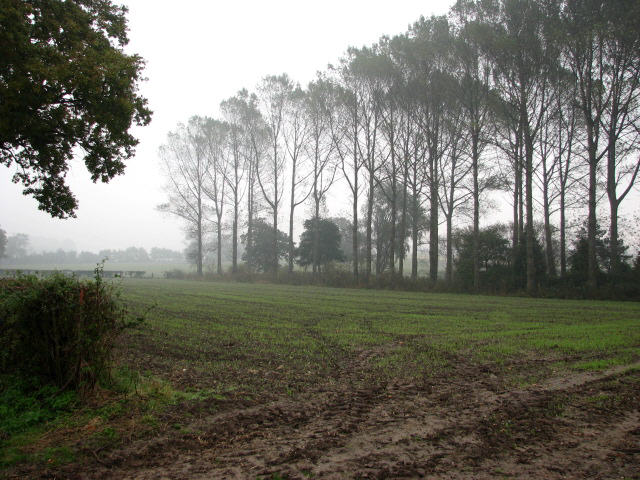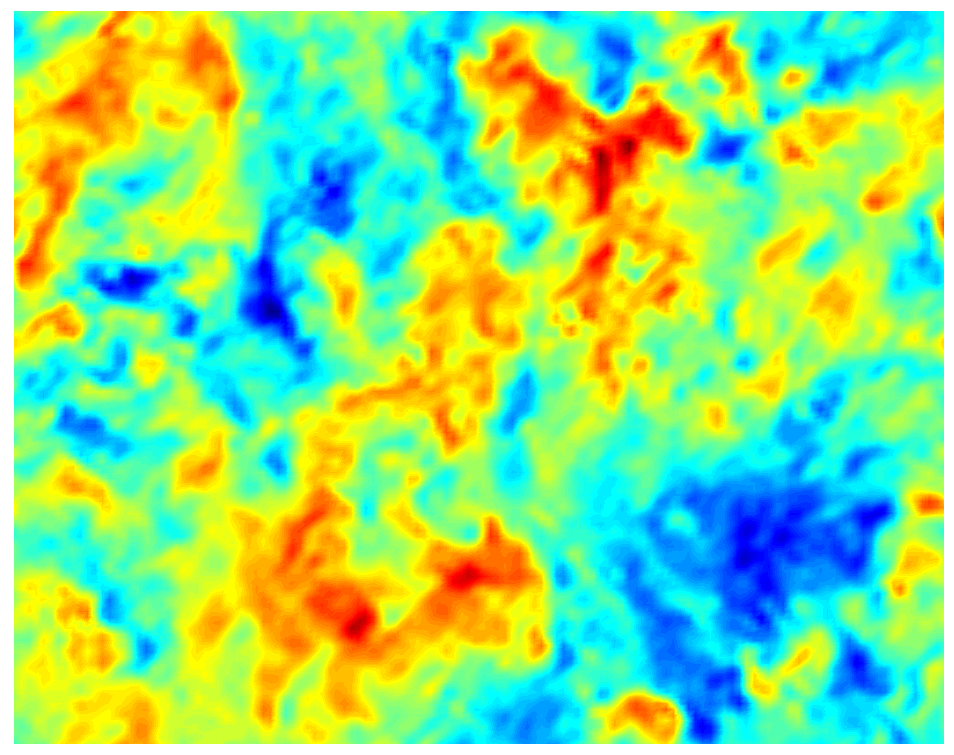|
Drizzle
Drizzle is a light precipitation which consists of liquid water drops that are smaller than those of rain – generally smaller than in diameter. Drizzle is normally produced by low stratiform clouds and stratocumulus clouds. Precipitation rates from drizzle are on the order of a millimetre (0.04 in) per day or less at the ground. Owing to the small size of drizzle drops, under many circumstances drizzle largely evaporates before reaching the surface, and so may be undetected by observers on the ground. The METAR code for drizzle is DZ and for freezing drizzle is FZDZ. Effects While most drizzle has only a minor immediate impact upon humans, freezing drizzle can lead to treacherous conditions. Freezing drizzle occurs when supercooled drizzle drops land on a surface whose temperature is below freezing. These drops immediately freeze upon impact, leading to the buildup of sheet ice (sometimes called black ice) on the surface of roads. Occurrence Drizzle tends to ... [...More Info...] [...Related Items...] OR: [Wikipedia] [Google] [Baidu] |
Freezing Drizzle
Freezing drizzle is drizzle that freezes on contact with the ground or an object at or near the surface. Its METAR code is FZDZ. Formation Although freezing drizzle and freezing rain are similar in that they both involve liquid precipitation above the surface in subfreezing temperatures and freeze on the surface, the mechanisms leading to their development are entirely different. Where freezing rain forms when frozen precipitation falls through a melting layer and turns liquid, freezing drizzle forms via the ''supercooled warm-rain process'', in which cloud droplets coalesce until they become heavy enough to fall out of the cloud, but in subfreezing conditions. Despite this process taking place in a subfreezing environment, the liquid water will not freeze if the environmental temperature is above , via supercooling. If ice crystals are already present in this environment, the liquid droplets will freeze onto these crystals and be effectively removed before they can grow large e ... [...More Info...] [...Related Items...] OR: [Wikipedia] [Google] [Baidu] |
Stratus Cloud
Stratus clouds are low-level clouds characterized by horizontal layering with a uniform base, as opposed to convective or cumuliform clouds formed by rising thermals. The term ''stratus'' describes flat, hazy, featureless clouds at low altitudes varying in color from dark gray to nearly white. The word ''stratus'' comes from the Latin prefix ''Strato-'', meaning "layer" or "sheet". Stratus clouds may produce a light drizzle or a small amount of snow. These clouds are essentially above-ground fog formed either through the lifting of morning fog or through cold air moving at low altitudes. Some call these clouds "high fog" for their fog-like form. Formation Stratus clouds form when weak vertical currents lift a layer of air off the ground and it depressurizes, following the lapse rate. This causes the relative humidity to increase due to the adiabatic cooling. This occurs in environments where atmospheric ''stability'' is abundant. Description Stratus clouds look like ... [...More Info...] [...Related Items...] OR: [Wikipedia] [Google] [Baidu] |
Mist
Mist is a phenomenon caused by small droplets of water suspended in the cold air, usually by condensation. Physically, it is an example of a Dispersion (chemistry), dispersion. It is most commonly seen where water vapor in warm, moist air meets sudden cooling, such as in Exhalation, exhaled air in the winter, or when throwing water onto the hot stove of a sauna. It can be created artificially with aerosol canisters if the humidity and temperature conditions are right. It can also occur as part of natural weather, when humid air cools rapidly, notably when the air comes into contact with surfaces that are much cooler than the air (e.g. mountains). The formation of mist, as of other Suspension (chemistry), suspensions, is greatly aided by the presence of nucleation sites on which the suspended water phase can congeal. Thus even such unusual sources of nucleation as small particulates from volcanic eruptions, releases of strongly polar gases, and even the magnetospheric ions associa ... [...More Info...] [...Related Items...] OR: [Wikipedia] [Google] [Baidu] |
METAR
METAR is a format for reporting weather information. A METAR weather report is predominantly used by aircraft pilots, and by meteorologists, who use aggregated METAR information to assist in weather forecasting. Raw METAR is highly standardized through the International Civil Aviation Organization (ICAO), which enables it to be understood throughout most of the world. Report names In its publication the '' Aeronautical Information Manual'' (''AIM''), the United States Federal Aviation Administration (FAA) describes the report as ''aviation routine weather report'', while the international authority for the code form, the World Meteorological Organization (WMO), describes it as the ''aerodrome routine meteorological report.'' The National Oceanic and Atmospheric Administration (part of the United States Department of Commerce) and the United Kingdom's Met Office both employ the definition used by the FAA. METAR is also known as ''Meteorological Terminal Aviation Routine Weathe ... [...More Info...] [...Related Items...] OR: [Wikipedia] [Google] [Baidu] |
Particulates
Particulate matter (PM) or particulates are microscopic particles of solid or liquid matter suspension (chemistry), suspended in the atmosphere of Earth, air. An ''aerosol'' is a mixture of particulates and air, as opposed to the particulate matter alone, though it is sometimes defined as a subset of aerosol terminology. Sources of particulate matter can be natural or anthropogenic hazard, anthropogenic. Particulates have impacts on climate and precipitation that adversely affect human health. Types of atmosphere, atmospheric particles include suspended particulate matter; thoracic and respirable particles; inhalable coarse particles, designated PM, which are granularity, coarse particles with a particle size, diameter of 10 micrometre, micrometers (μm) or less; fine particles, designated PM, with a diameter of 2.5 μm or less; ultrafine particles, with a diameter of 100 nm or less; and soot. Airborne particulate matter is a List of IARC Group 1 carcinogens, Group ... [...More Info...] [...Related Items...] OR: [Wikipedia] [Google] [Baidu] |
Row Of Poplars In The Drizzle - Geograph
Row or ROW may refer to: Exercise * Rowing, or a form of aquatic movement using oars * Row (weight-lifting), a form of weight-lifting exercise Mathematics and informatics * Row vector, a 1 × ''n'' matrix in linear algebra * Row(s) in a table (information), a data arrangement with rows and columns * Row (database), a single, implicitly structured data item in a database table * Tone row, an arrangement of the twelve notes of the chromatic scale Places * Rów, Pomeranian Voivodeship, north Poland * Rów, Warmian-Masurian Voivodeship, north Poland * Rów, West Pomeranian Voivodeship, northwest Poland * Roswell International Air Center's IATA code * Row, a former spelling of Rhu, Dunbartonshire, Scotland * The Row (Lyme, New York), a set of historic homes * The Row, Virginia, an unincorporated community * Rest of the world (RoW) * The Row or The Row Fulton Market, 900 West Randolph, a Chicago Skyscraper on Chicago's Restaurant Row Other * Reality of Wrestling, an Americ ... [...More Info...] [...Related Items...] OR: [Wikipedia] [Google] [Baidu] |
Large Eddy Simulation
Large eddy simulation (LES) is a mathematical model for turbulence used in computational fluid dynamics. It was initially proposed in 1963 by Joseph Smagorinsky to simulate atmospheric air currents, and first explored by Deardorff (1970). LES is currently applied in a wide variety of engineering applications, including combustion, acoustics, and simulations of the atmospheric boundary layer. The simulation of turbulent flows by numerically solving the Navier–Stokes equations requires resolving a very wide range of time and length scales, all of which affect the flow field. Such a resolution can be achieved with direct numerical simulation (DNS), but DNS is computationally expensive, and its cost prohibits simulation of practical engineering systems with complex geometry or flow configurations, such as turbulent jets, pumps, vehicles, and landing gear. The principal idea behind LES is to reduce the computational cost by ignoring the smallest length scales, which are the most c ... [...More Info...] [...Related Items...] OR: [Wikipedia] [Google] [Baidu] |
Snow Grains
Snow grains are a form of precipitation. Snow grains are characterized as very small (<1 mm), white, opaque grains of ice that are fairly flat or elongated. Unlike snow pellets, snow grains do not bounce or break up on impact. Usually, very small amounts fall, mostly from s or fog, and never fall in the form of a shower. The METAR
METAR is a format for reporting weather information. A METAR weather report is predominantly used by aircraft pilots, and by meteorologists, who use aggregated METAR information to assist in weather forecasting.
...
[...More Info...] [...Related Items...] OR: [Wikipedia] [Google] [Baidu] |
Rain
Rain is a form of precipitation where water drop (liquid), droplets that have condensation, condensed from Water vapor#In Earth's atmosphere, atmospheric water vapor fall under gravity. Rain is a major component of the water cycle and is responsible for depositing most of the fresh water on the Earth. It provides water for hydroelectricity, hydroelectric power plants, crop irrigation, and suitable conditions for many types of ecosystems. The major cause of rain production is moisture moving along three-dimensional zones of temperature and moisture contrasts known as weather fronts. If enough moisture and upward motion is present, precipitation falls from convection, convective clouds (those with strong upward vertical motion) such as cumulonimbus (thunder clouds) which can organize into narrow rainbands. In mountainous areas, heavy precipitation is possible where upslope flow is maximized within windward sides of the terrain at elevation which forces moist air to condense and ... [...More Info...] [...Related Items...] OR: [Wikipedia] [Google] [Baidu] |
Global Surface Temperature
Global surface temperature (GST) is the average temperature of Earth's surface. More precisely, it is the weighted average of the temperatures over the ocean and land. The former is also called sea surface temperature and the latter is called surface air temperature. Temperature data comes mainly from weather stations and satellites. To estimate data in the distant past, proxy data can be used for example from tree rings, corals, and ice cores. Observing the rising GST over time is one of the many lines of evidence supporting the scientific consensus on climate change, which is that human activities are causing climate change. Alternative terms for the same thing are global mean surface temperature (GMST) or global average surface temperature. Series of reliable temperature measurements in some regions began in the 1850—1880 time frame (this is called the ''instrumental temperature record''). The longest-running temperature record is the Central England temperature da ... [...More Info...] [...Related Items...] OR: [Wikipedia] [Google] [Baidu] |
Greenhouse Effect
The greenhouse effect occurs when greenhouse gases in a planet's atmosphere insulate the planet from losing heat to space, raising its surface temperature. Surface heating can happen from an internal heat source (as in the case of Jupiter) or come from an external source, such as its host star. In the case of Earth, the Sun emits shortwave radiation (sunlight) that passes through greenhouse gases to heat the Earth's surface. In response, the Earth's surface emits outgoing longwave radiation, longwave radiation that is mostly Absorption (electromagnetic radiation), absorbed by greenhouse gases. The absorption of longwave radiation prevents it from reaching space, reducing the rate at which the Earth can cool off. Without the greenhouse effect, the Earth's average surface temperature would be as cold as . This is of course much less than the 20th century average of about . In addition to naturally present greenhouse gases, burning of fossil fuels has greenhouse gas emissions, in ... [...More Info...] [...Related Items...] OR: [Wikipedia] [Google] [Baidu] |






